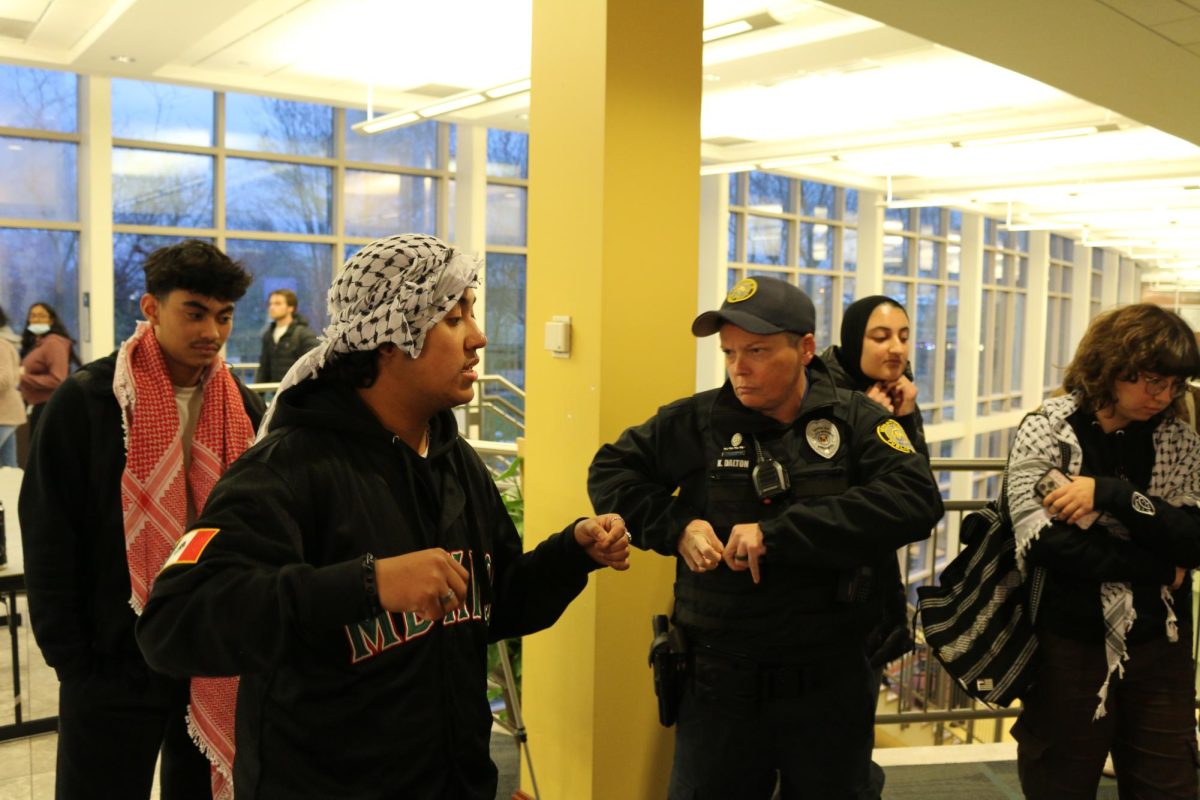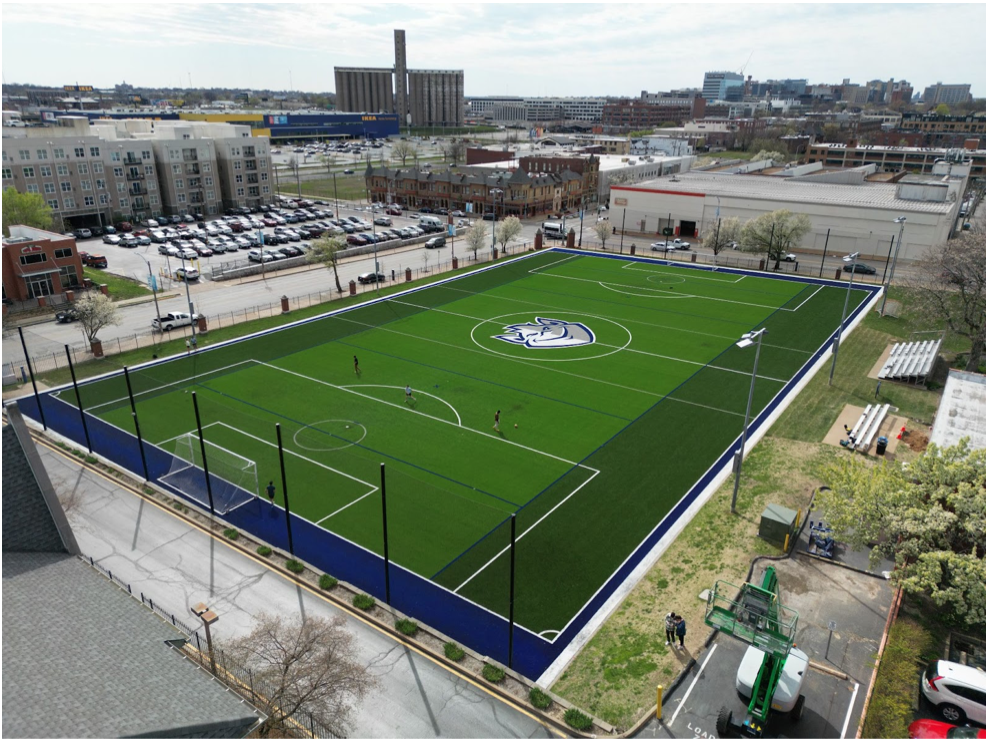In light of the two recent crimes on and near Saint Louis University’s campus, and April’s Virginia Tech massacre, college students are more concerned than ever about their safety-and they should be, if only for their own safety.
“A lot of people have the mentality that it won’t happen to them, that you don’t need DPS on your cell phone, that you don’t need someone with you wherever you go,” said sophomore Monica Martinez, who was held up at gunpoint Oct. 10 behind Marchetti East. “But there can’t be someone there everywhere I go.”
Sam Simon, who took over for Department of Public Safety Director Jack Titone on Sept. 14, emphasizes that the real premise of being safe is to “know that you’re vulnerable. Take all the steps you can to prevent it . You take a stake in your own safety. Safety starts with you, anytime, every time. It’s not just DPS.”
“I try to be more cautious and more aware of my surroundings,” said Martinez. “I think that makes me more safe.”
Simon has determined, a month into his job as director of emergency preparedness and public safety, that his challenge is the perception of SLU as a safe campus-which, he maintains, it is.
“We are very, very safe,” he said. “We are very, very secure . The city believes, the mayor believes it’s a safe university.”
That does not mean, he stressed, that students should not be vigilant toward their surroundings and take precautions. He emphasizes that students should walk in pairs if possible and take advantage of DPS’ escort service, which can be reached by calling 977-3000. Director of University Communications Clayton Berry said that DPS reports providing more than 35,000 escorts a year.
“Whenever you think you should call, you should call,” Simon said. “Don’t walk alone at 2:30 in the morning,” he said.
Despite campus and city population growth, said Berry, crime on SLU’s campus continues to decline, including a 40 percent drop in 2004.
“We’re down nine crimes this year,” said Larry Purvis, interim director of public safety. There have been 19 crimes so far at SLU in 2007, compared to 28 at this time last year. There are “more crimes in [the Kingshighway] area than on our campus,” he said.
When crimes do occur on campus, multiple University organizations respond. Simon said that Residence Life, Campus Ministry and Student Development were all involved in handling the reported sexual assault incident on Sept. 29, which ultimately did not lead to charges. The synergy is not University-inclusive: DPS and the St. Louis Police Department work together closely, and 12 to 15 DPS officers are former St. Louis police officers.
Since DPS is private security-licensed, the officers, who are armed, can apprehend, but not detain. In contrast, Washington University’s security operation is a police force, and SLU’s is community-oriented policing. However, SLU’s DPS is strengthened by its “excellent relationship with the St. Louis Police Department,” Purvis said.
DPS is part of the 9th police district and is the largest regional police department in the city of St. Louis. DPS also collaborated with the FBI, Secret Service and St. Louis Police Department when Ehud Barak, former prime minister of Israel, spoke at SLU in February.
As mandated by the 1998 Jeanne Clery Disclosure of Campus Security Policy and Campus Crime Statistics Act, all public and private schools must publish annual security reports, including three years of campus crime statistics. The crime logs are public and are available on the school’s public safety website.
The Clery Act is named after Lehigh University freshman Jeanne Clery, who was raped and murdered in her residence hall room in 1986. Her parents, discovering that the university’s students were not being told about all of the violent crimes occurring on campus, headed the effort to pass a law giving students the right to know about campus crimes. The act was signed into law in 1990 by President George Bush and renamed in memory of Clery in 1998.
Schools must also provide “timely” warnings to students, and SLU currently does so with campus-wide safety notices via the SLU e-mail system. Purvis said that DPS takes the policy of full disclosure seriously and there is a $25,000 fine for each unreported instance of a crime.
“If there’s a question [of a crime], they disclose it,” he said.
Simon said that safety is relative because there is not a static level. “It’s dynamic,” he said. “9/11 woke us all up that things can happen. And things will happen.”
Simon has extensive training in emergency planning. From 2002 to 2007, he served as the director of the department of public safety for the City of St. Louis after a 22-year stretch with the St. Louis Police Department. He was also responsible for the City Emergency Management Agency and was the coordinator for Homeland Security for the metropolitan area.
Some schools are considering mass communication methods, like university-wide cell phone texts, in the event of a campus emergency like the Virginia Tech shooting.
University of Missouri-St. Louis Police Lieutenant John Schupp said that a communication system is “in the process and should be ready soon” at UMSL.
Simon inherited SLU’s planned mass communication system from Titone, who had been working to develop a communication coordination. The system would use contact information of individuals of the SLU community-via phone numbers and e-mail addresses entered through Banner-to notify people of an imminent danger. The message would be relayed via e-mail, cell phone text and home telephone and supplemented by vehicular public address systems.
Simon said that it is important to have a safety plan. “There’s no utopian formula; 9/11 showed us that. The world has changed . Take control of your own destiny as best you can. Don’t rely on others to make you safe.”
Martinez said that she now uses DPS’s services without hesitation.
“I’m still paranoid wherever I go, but I’m taking more of a step to be aware of myself and aware of my surroundings,” she said. “I do what I can. I take more of the actions myself.”
More information about the University communication system will appear in next week’s issue of The University News.





